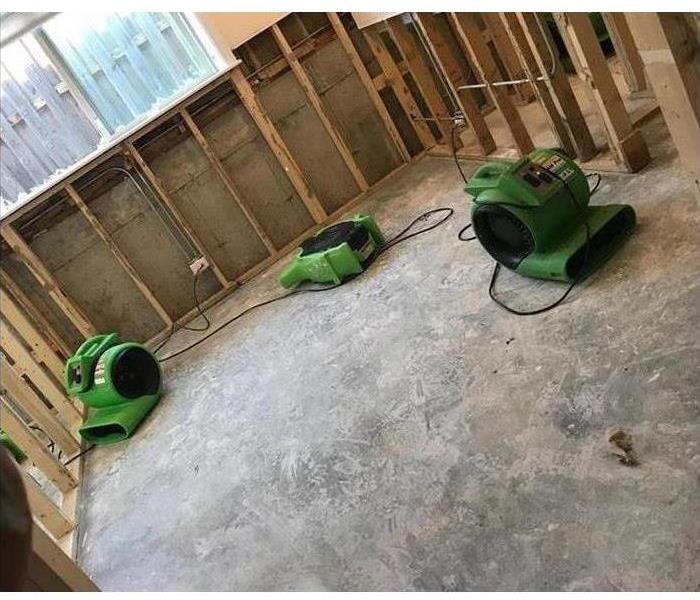What Happens After the Storm Floods Recede?
4/30/2019 (Permalink)
Heavy storms often cause floods, with waters rushing in to fill homes with dirty, contaminated liquid. As the deluge destroys personal items and pollutes household goods, the damage can be heart-wrenching in Chicago, IL. But after the water recedes and residences begin to dry out, homeowners are often left with numerous unanswered questions about contamination, tear out, and mold.
3 Things to expect after the water has been drained from the flooded building.
Call the Professionals
Most homeowners want to get back into their homes as quickly as possible after the building has dried out from the water damage. The problem is that the portion of the structure that was submerged in the contaminated water has probably absorbed the liquid and become contaminated itself. Extracting the water was the first step. Now building restoration experts need to assess the situation and tear out the damaged wood, sheetrock, and subflooring.
Prepare for Repairs
Storm flood waters almost always leaves a contaminated residue of silt, sewage, and chemicals behind. The polluted liquids can be quickly sucked from your home, but the residue is more difficult to eliminate. Storm restoration experts can remove the damaged building materials and residue as the team gets rid of damp, damaged walls, floors, and wood trim. Remember, the waterline is a mark of how high the actual flood water moved, not how high the water soaked up into the walls.
Wait To Dry Out
The cleanup crew must typically wait for the wood and floors to thoroughly dry before permanent restoration and repairs can be made to your house. In the meantime, ventilation fans may need to blow, and tear out areas may need to be decontaminated. To avoid future mold hazards, be patient and allow the dehumidifiers to work. It may take weeks before rebuilding begins, but the wait can be worth it when your beautiful home is restored in Chicago, IL.



 24/7 Emergency Service
24/7 Emergency Service
